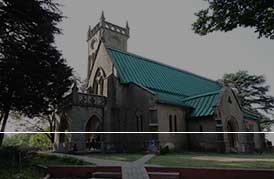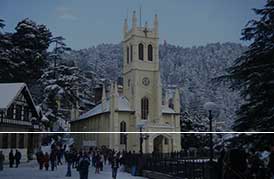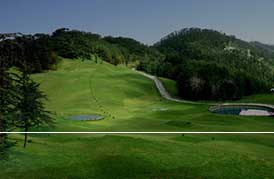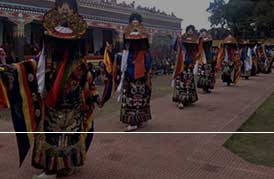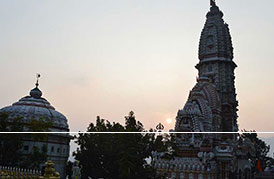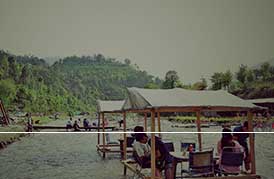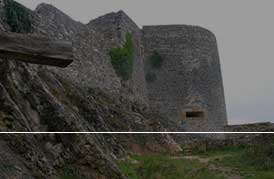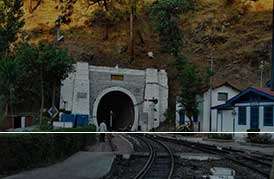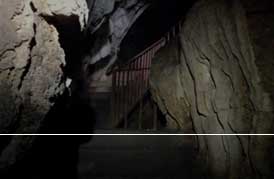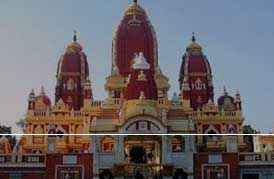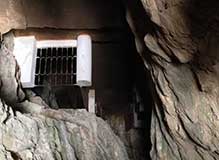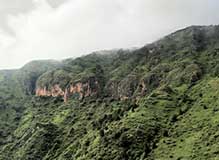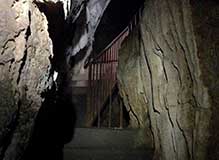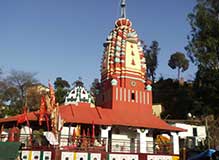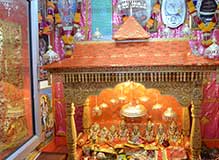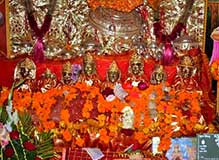KASAULI (25 km)

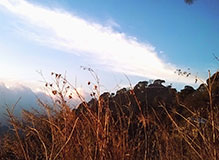

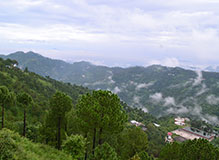
Kasauli is a cantonment and town, located in Solan district in the Indianstate of Himachal Pradesh. The cantonment was established by the British Raj in 1842 as a Colonial hill station. 77 km from Shimla, 65 km from Chandigarh, and 94 km from Ambala Cantt (Haryana), an important Railway Junction of North India and lies at a height of 1,927 meters (6,322 Ft.).
Kasauli has a moderate climate. Winter temperature is approximately 2 degrees Celsius, with summer temperatures rarely exceeding 32 degrees Celsius or more.
One of the most popular place in Kasauli is Manki Point which is situated in the 'Air Force Station' near the Lower Mall region about 4 km from the center of town. According to the Ramayana myth, when Lord Hanuman was returning from the Himalayas after acquiring the "Sanjivany Booty", one of his feet touched the hill; that's why the top of the hill is in the shape of a foot. On starry and clear nights a stunning view of Chandigarh can be seen from Manki Point.
SHIMLA (45 km)


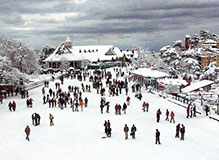
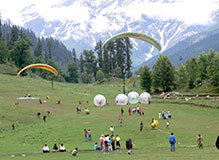
Shimla used to be the summer capital of the British Raj when they ruled India. Now it's the state capital of Himachal Pradesh. This wonderfully cool and charming town sprawls along a mountain ridge, enveloped in oak, pine and rhododendron forests. It's quite famous for its colonial style buildings and historic railway. The old Christ Church, with its beautiful stained glass windows, is one of Shimla's most prominent landmarks. Also to be enjoyed are the mesmerizing views from Scandal Point, and the Viceregal Lodge (try to be there for the sunrise or sunset) on Observatory Hill. There are plenty of adventure sports and short hikes on offer in the vicinity as well.
It has an average altitude of 2,206 meters (7,238 ft) above mean sea level and extends along a ridge with seven spurs. The city stretches nearly 9.2 kilometers (5.7 mi) from east to west.Shimla was built on top of a total of seven different hills namely: Inverarm Hill, Observatory Hill, Prospect Hill, Summer Hill, Bantony Hill, Elysium Hill and Jakhoo Hill. The highest point in Shimla is the Jakhoo hill, which is at a height of 2,454 meters (8,051 ft).
CHAIL (35 km)




Chail is a hill station in Himachal Pradesh, India. It once served as the summer capital of His Highness Maharaja AdhirajBhupinder Singh of Patiala .The Chail Palace is well known for its architecture. The cricket ground and a polo ground which is there at an altitude of 2,444 m was owned by erstwhile royal family of Patiala. The ground has the world's highest cricket ground.
Chail is also considered as the hiker's paradise. The area is away from the bustling life of the state capital Shimla.
In 1891, Maharaja Bhupinder Singh of Patiala incurred the rage of Lord Kitchener. It led to the restriction of his entry into the summer capital, Shimla. This incensed the Maharaja and he vowed to build a new summer capital for himself. So he rebuilt the place (Chail) as per his requirements.
Chail is situated at an altitude of - 2,250 m, higher than Shimla. The place is surrounded by the forests of chir pine and giganticdeodars. Shimla and Kasauli can also be viewed at night from here.Chail is pleasant in summers and cold in winter.
Chail stipulates for adventure seeking tourist, as it is being located in several mountain ranges and dark green forests. Tourists to Chail have great account of adventurous activities to perform and make their holidays unforgettable.
BON MONASTERY (15 km)




Bon Monastery, which one of the main tourist attractions in the Solan district is an offshoot of the Menri Monastery, the second oldest monastery in the world.
It is on the Narag-Sarahan road and is run by the Yungdrung Bon Monastic Centre. Constructed in 1969, it was founded by Abbot LungogTenpaiNyima. The place is considered to be the best place to witness Tibetan culture.This monastery has recreated the Geshe training program and is home to over 200 monks. Menri in India and TritenNorbutse Monastery in Nepal now host the only two Geshe programs in the Bon lineage.
Bon Monastery at solan is the second oldest in the world and very important religious place for the Bon community. Very beautiful place with lush green lawn and flowers with pictures view.
JATOLI TEMPLE (7 km)

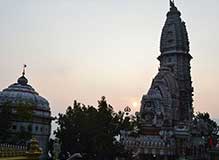


Jatoli Temple is a wonderful piece of architectural beauty and the Asia's highest temple of lord Shiva. Jatoli means long Jata (hairs) which further signifies the long Jatas of lord Shiva. While tracing the history of this place you will come to know that there existed the oldest temple of lord Shiva where an ancient lingam is placed. According to a legendary belief, lord Shiva visited this place and slept for a night.
The architectural design of Shiva’s Temple in Jatoli is marvelous. This temple has been built according to Indo – Aryan Style where the top tower is round with a curvilinear outline which ends into a tip. The tip of such temple is usually decorated with golden kalash.The Shiva’s temple at Jatoli has three consecutive sub-pyramidal structures which end in a tip. The tapering part in the temple architecture is called as Shikhar or the pinnacle. The height of this sub pyramidal has been maintained in ascending order but kept little lower than the main pyramidal of what is called as ‘Vimana’. At the base of first sub pyramidal platform Lord Ganesha has been seated. In the second sub pyramidal area ‘Shesh Nag’ occupies the place.
The main pyramid is tallest among all sub pyramids, thus making the height of this temple 111 ft., and has been given the tag of highest temple of lord Shiva in Asia. The construction the temple was completed in 39 years.
SADHULPUL (25 km)



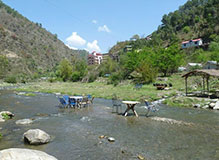
Sadhupul is a small village in Himachal Pradesh between Solan and Chail, located at the site of a small bridge constructed over the hill river "Ashwini".
Sadhupul is one of the famous and wonderful places for the wondering and is a good picnic spot. This place is basically famous for the restaurant which is situated in the water you can enjoy the drinking in the blowing water and enjoy the beautiful view of the water and mountains.
This place is famous for enjoying the vacations with friends especially when you like to enjoy the holidays in the waters. You can enjoy the beautiful views of the mountains by sitting on the corner of river in the evening. In the evening the view of the sun set is awesome.
GURKHA FORT (20 km)



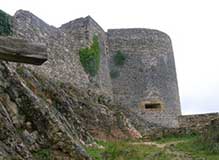
Gurkha Fort is one of the popular historic attractions of Solan. Gurkha Fort, also known as Arki Fort, was the capital of the princely state of Baghal. The fort was occupied by the Gurkhas during 1815-1816. The fort was later renovated by Raja Kishen Chand with fine murals in the Pahari style in the year 1850.
Gurkha Castles are an indispensable part of heritage tourism in Himachal but most visitors miss out on these monuments. The Gurkha castles in Solan, district remind us of the life and time under the Gurkha regime. While most of the structures built by the Gurkhas have crumbled, the remaining few beckon tourists. It is said that most of the Gurkha castles were built by forcing the citizens of the occupied states to work as unpaid labour.
In most of the castles a fine grind of lime, surkhi and mash-dal (pulse) was used to build stone walls. This structure is about 150-years-old.
BAROG (5 km)


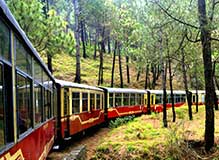
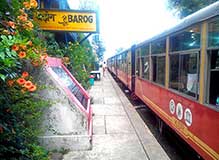
It is named after Colonel Barog, an engineer involved in building the railway track in 1903. Barog, the engineer, was responsible for designing a tunnel near the railway station. He commenced digging the tunnel from both sides of the mountain, which is quite common as it speeds up construction. However, he made mistakes in his calculation and while constructing the tunnel, it was found that the two ends of the tunnel did not meet.Barog was fined an amount of 1 Rupee by the British government. Unable to withstand the humiliation, Barog committed suicide and was buried near the incomplete tunnel. The area came to be known as Barog after him.
Later it was constructed under Chief Engineer H.S. Harrington's supervision, guided by a local sage, Bhalku, from July 1900 to September 1903, at a cost of 840,000 rupees.
This tunnel is the longest of the 103 operational tunnels on the route of the Shimla-Kalka Railway, which is 1143.61m long. Barog station is immediately after the tunnel. Barog tunnel is the straightest tunnel in the World.Trains take about 2.5 minutes to cross this tunnel, running at 25 kilometers per hour.
Barog is located at a height of 1560 meters above the mean sea level. Due to its height, temperatures here range between 23 and 10 °C during summers and between 15 and 5 °C during winters. The summers last from April to July. Winters set in during December and typically last up to February.
MOHAN SHAKTI HERITAGE PARK (14 km)




Just half an hour drive from Solan, the Mohan Shakti Heritage Park is an ultimate place to visit. Mohan Shakti Heritage Park is North India's first ever ancient heritage park. The picturesque park is supplemented with many unique structures. The park is believed to be the largest heritage park in Himachal Pradesh. Here, tourist can enjoy exploring a heritage park, pass through grasslands, indulge in bird watching, catch glimpses of archaeological sites, and gorgeous landscapes of peaks, clouds and sunshine.
Within the huge periphery of the park, there is a beautiful shrine, Kali KaTibba temple. The shrine seems like an emerald amidst the wilderness. The entire complex of Heritage Park is dotted with multiple statues, sculptures and statuettes. Huge statues of Indian Gods and Goddesses can be seen here. Unique animals made of plaster of Paris (POP) are the main attractions of the park.
Located in the midst of great mountains, Mohan Shakti Heritage Park is an exceptional place. The park is an amazing initiative to revive the Vedic lifestyle.
DAGSHAIJAIL MUSEUM (18 km)



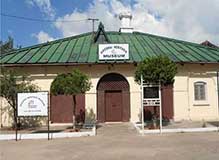
Dagshai jail museum is a former British prison which is now a museum frequented by tourists. Dhagshai is one of the oldest cantonment towns in the Solan district of Himachal Pradesh. Earlier the place was used as a storage yard. After it was cleaned up with the help of the army, a well designed structure emerged. Later, this place was converted into a museum. It is the only museum in India which is the only jail museum in India apart from the Cellular Jail in the Andamans.
A trip through the jail blocks is as chilling now as it was in the British era. Construction of the jail began in 1849 and included 54 maximum cellular cells. These cells have two doors that are three feet apart. There is one cell for those who were to be meted out exceptionally harsh punishment. There is no source of ventilation and light in the cells of the Dagshai Jail. There is only one VIP cell in the jail — with luxuries such as a fireplace and washroom. Not even a single prison was able escape from the jail.
The jail came into the limelight after the Irish mutiny. To provide moral support to the Irish people, Mahatma Gandhi even stayed in this jail for one year. The Gorkha rebels of the Nasiri Regiment, who had rebelled during the 1857 revolt, were also brought here.







